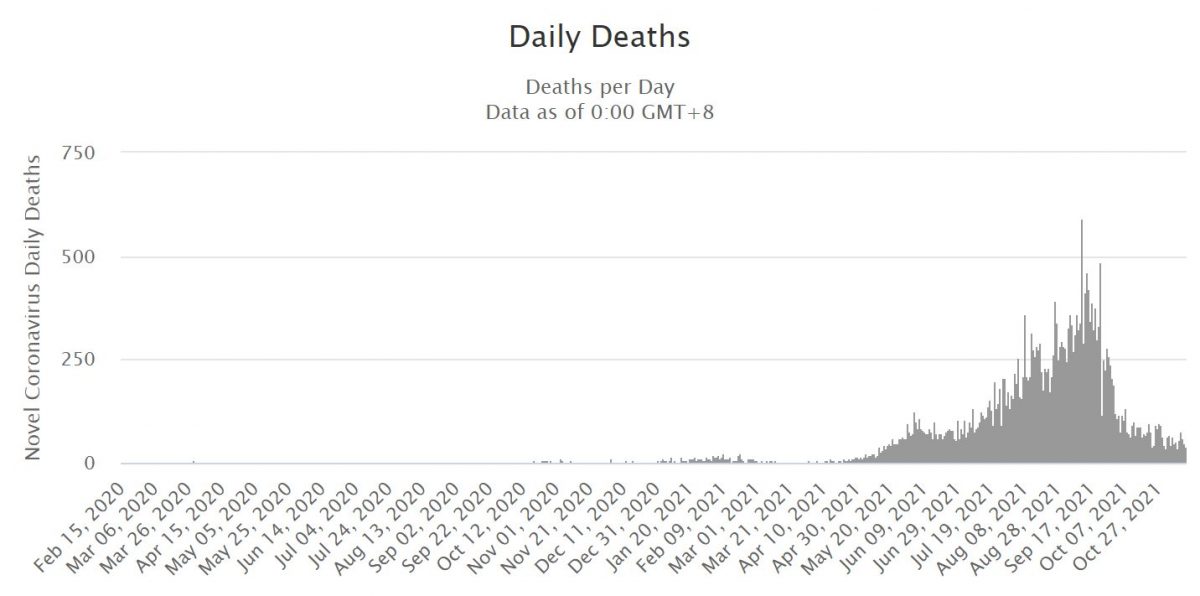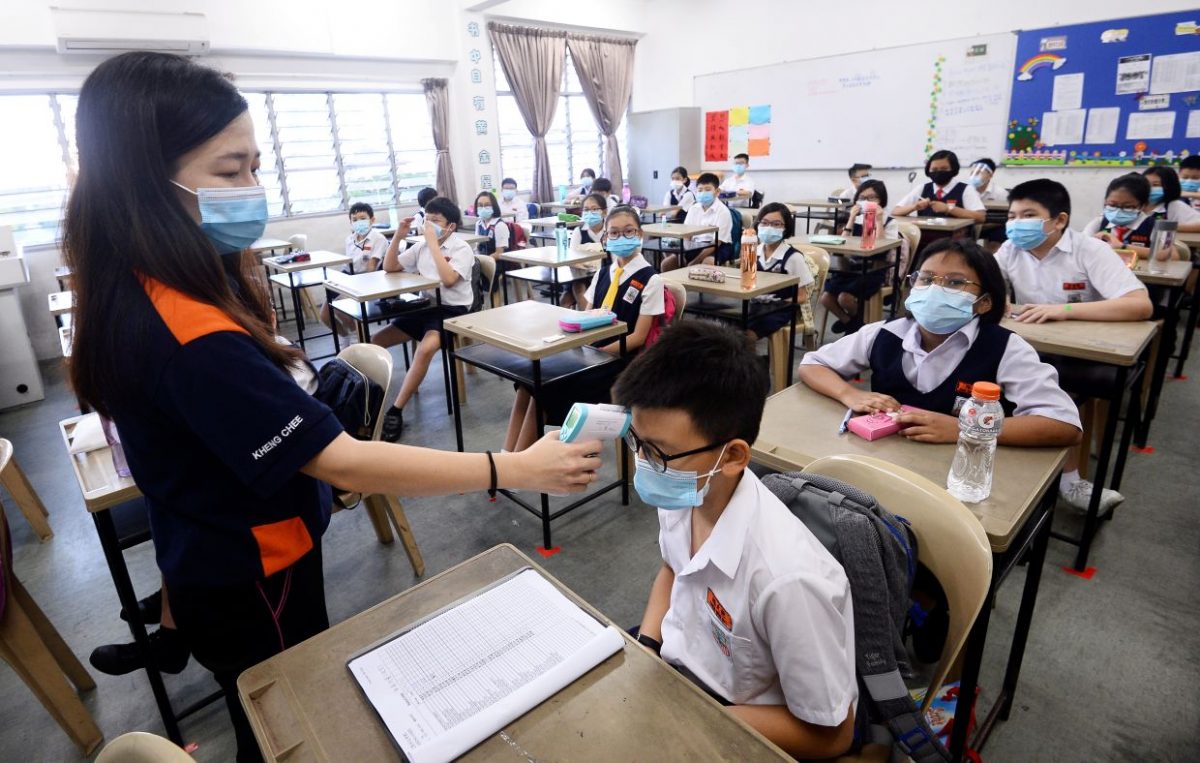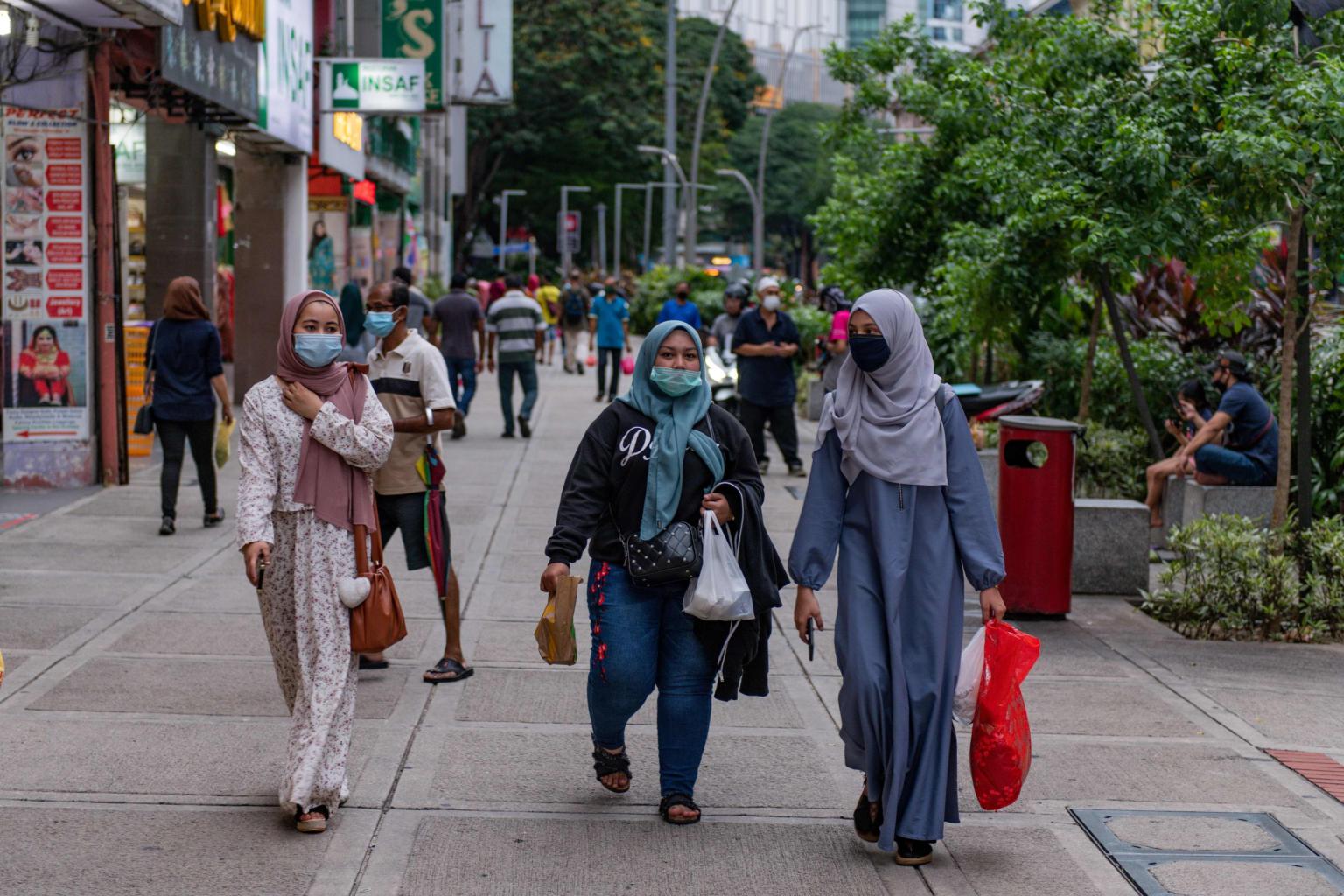For the many in Malaysia who are fully vaccinated, it may feel that things are starting to return to normal, but there’s still good reason to tread carefully as we gradually reclaim our lives.
The swift pace of the return to something resembling normalcy for most Malaysians has been nothing short of astounding. As the numbers of fully vaccinated residents grew and grew, the vaccination penetration finally hit a tipping point in the country’s population, and after that, virtually all the Covid metrics that we had been accustomed to seeing climb with every passing day suddenly faltered, and then began a steep plunge. In response, authorities moved quickly beginning in the second half of September to relax many of the numerous restrictions people had been living with for months.
There can be no doubt: The vaccines have done their job, thanks in no small measure to an incredibly impressive take-up rate by the citizens and foreign residents of Malaysia. Despite some still-lingering holdouts, the Ministry of Health now reports that more than 95% of all adults nationwide have been fully vaccinated, and by the time the latest batch get their second jab, that number will increase to nearly 98%. Among adolescents, 80% have already been fully immunised, and that number will inch upward in the next few weeks, as well.

When looking at the population as a whole – not just adults – Malaysia will have about 78% of everyone fully vaccinated soon. That number will continue to incrementally grow bit by bit over time, though it’s reasonable to assume that the increase in percentage immunised will be minimal. (Projections show it will take another 208 days to grow the total percentage fully vaccinated by just two points.) Still, though, these are truly remarkable results, and Malaysia is now reaping the benefits of the country’s successful vaccination drive.
Even today, you need only look at the case positivity rates and infectivity indices of various states to clearly see the impact of mass, widespread vaccination against Covid-19. Without any doubt, there is an inverse correlation between the percentage of fully vaccinated residents in a given state and that state’s positivity rate. Put plainly, the higher the rate of vaccination, the lower the rate of tests coming back positive.

In Kuala Lumpur, for example, 91% of the population is fully vaccinated and the case positivity rate is an encouraging 2.3% (experts say this rate should be below 5%). What’s more, in the past seven days in KL, there have been just 12 cases per 10,000 population.
Now contrast that with Kelantan, where only 59.2% of residents are fully vaccinated. That’s just not good enough, and this is reflected in their case positivity rate of 13.7% and their seven-day case count of 23 per 10,000 population – roughly double that of KL.
And that, frankly, looks to be Malaysia’s weak point: It’s the more rural states like Kelantan, along with Sabah, Terengganu, Pahang, and mainland Kedah (as Langkawi boasts excellent vaccination coverage), that are preventing Malaysia’s vaccination drive from being an even greater success story than it already is. State authorities in particular will need to redouble their efforts on education and penetration to the most rural areas to get vaccination numbers up to effective levels in these places.

AND YET, THE PANDEMIC PERSISTS
A deeper dive into the data reveals that while there are unquestionably a number of encouraging trends – and certainly every justification for the sweeping relaxation of restrictions we’ve seen – the simple truth is that the coronavirus pandemic is not over yet. If anything, we’re now in the transition phase to endemicity, that period of adaptation during which we continue to learn about the virus and the disease that it causes, but also start just learning how to live with it. After over a year and a half of trying to beat it, trying to mitigate it, trying to control it – in the end, it looks like we’ll just have to figure out how to coexist with this virus.
Trends are important to look at in a pandemic, and that doesn’t change as we move through the transitory period. New daily cases – never a number quite deserving of the outsize importance ascribed to it during the height of the pandemic – have settled into a relatively stable trend, usually around 5,000 to 6,000 new cases logged per day.

While that’s clearly far preferable to the 22,000 daily cases Malaysia was recording during the height of the outbreak in August, it’s worth pointing out that at no point in 2020 did we ever have anything even close to 5,000 new cases a day. In fact, Malaysia didn’t even breach 1,000 new cases in a single day until late October in 2020.
Throughout the first year of life with Covid, the pandemic’s worst was biding its time, and it wasn’t until May 2021 when the real dread began to creep in, and by two months later, new daily cases and deaths were both skyrocketing, heading towards alarming record highs in August and September. But soon thereafter, at last, the promise of the Covid vaccines was realised. Hope replaced despair, and the numbers began to fall in earnest.
A NEW NORMAL BEGINS
Even though new cases are still coming in each day by the thousands, the overwhelming majority of them are either asymptomatic or have only mild symptoms. Deaths and critical illness caused by Covid are way down, and these days, most of the worst cases are found among the unvaccinated. Epidemiologists suggest this is what we can expect from a future where Covid is endemic. Like influenza – and even rhinovirus, the pathogen behind the common cold – this will be just another respiratory disease that humanity will add to its list.

In temperate climates, the spread of local outbreaks will likely get worse each year during the colder months as people spend more time indoors, and booster shots may ultimately become as commonplace as annual flu shots in those locales. Our own immune systems will continue to learn and adapt, and while serious illness and deaths will still occur as a result of Covid-19 – particularly in those who are unvaccinated or have comorbidities – we may yet get to a point where it will be no worse than the seasonal flu. For now, of course, the future is all a big unknown.
One thing is fairly certain, though: The global turmoil catalysed by the pandemic over the past two years is definitely not sustainable, and – barring a disastrous turn of events – it seems unlikely the world will return to such broadly disruptive measures. But for many industries, and indeed for many societies, things will not ever be quite the same in a post-Covid world as we work out what our new normal looks like.

"ExpatGo welcomes and encourages comments, input, and divergent opinions. However, we kindly request that you use suitable language in your comments, and refrain from any sort of personal attack, hate speech, or disparaging rhetoric. Comments not in line with this are subject to removal from the site. "























